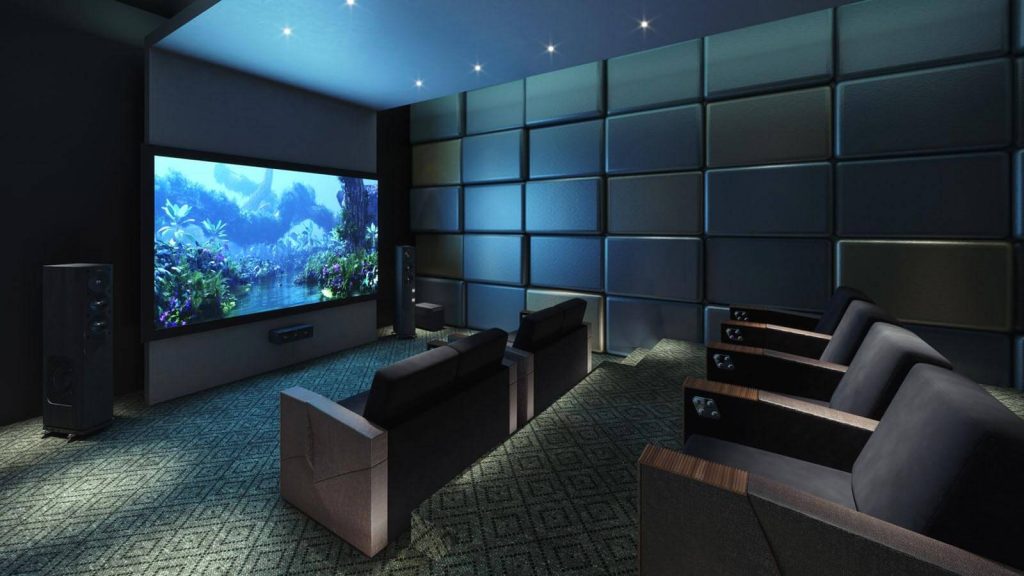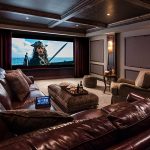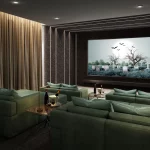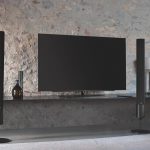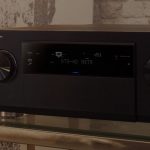On the web you can find a great deal of information regarding home theater or how to independently set up a private movie theater in your own home. Very often, however, an extremely important phase of this work is overlooked: the design
Therefore, this article is intended to be a guide to designing a Home Theater room for all those who are approaching this world, want to understand more about it and maybe try the do it yourself route.
If you are among those who have decided to embark on this fantastic adventure, this is the article for you, but remember: no one can improvise themselves as an architect, Interior Designer or a professional Home Theater room builder. You have to know the materials, the brands, the functions of each element, and have in-depth skills in physics, acoustics, design and architecture.
We know, you may be wondering, why then do you who are professionals write a guide for us inexperienced people while knowing that we will not get the desired result?
The answer is very simple.
This guide has 3 functions:
1) To inform: those who read us, do so because they want to acquire information, they know full well that they will not be able to obtain skills for which a study of years is needed, yet they want to know in general terms the steps, elements and tools that are needed to make a home theater room.
2) Drive: maybe you haven’t decided to do everything yourself, but you want to rely on professionals (by the way, check out this link, you might find what you’re looking for!). The moment you find yourself having to talk to the person in charge of making the design for your home theater room, this guide will allow you to speak “the same language” as them.
3) Leading up to a decision: the content a company puts on its blog must convey something useful to the reader, it can’t be empty words just to fill space on the web. After reading this guide you will know how to decide whether to go the DIY route or rely on a specialist.
The research phase
As with any achievement, creative or architectural, the research, study and design phase accounts for at least 40 percent of the work.
Imagine you start venturing into an unknown place without any map: you won’t know where to start or what direction to take.
That’s why it’s extremely important to spend time on the initial research phase, jotting down notes, measurements, notes, photographs, and then go on to design your project (and later take action).
And it goes without saying. This is painstaking work, you will have to be precise, obsessive, careful, and the more you are the better results you will get.
Here are a few pointers to understand the elements you will have to apply yourself to in this study and research phase:
- Room measurements
- Sources of illumination
- Presence or absence of windows
- Location of the room within the house
- Measurements of the room after soundproofing intervention
- Interior decoration
- The sessions
- Type of projector, screen or TV
- Sound system
- Comparison of various brands and models
Free software for design
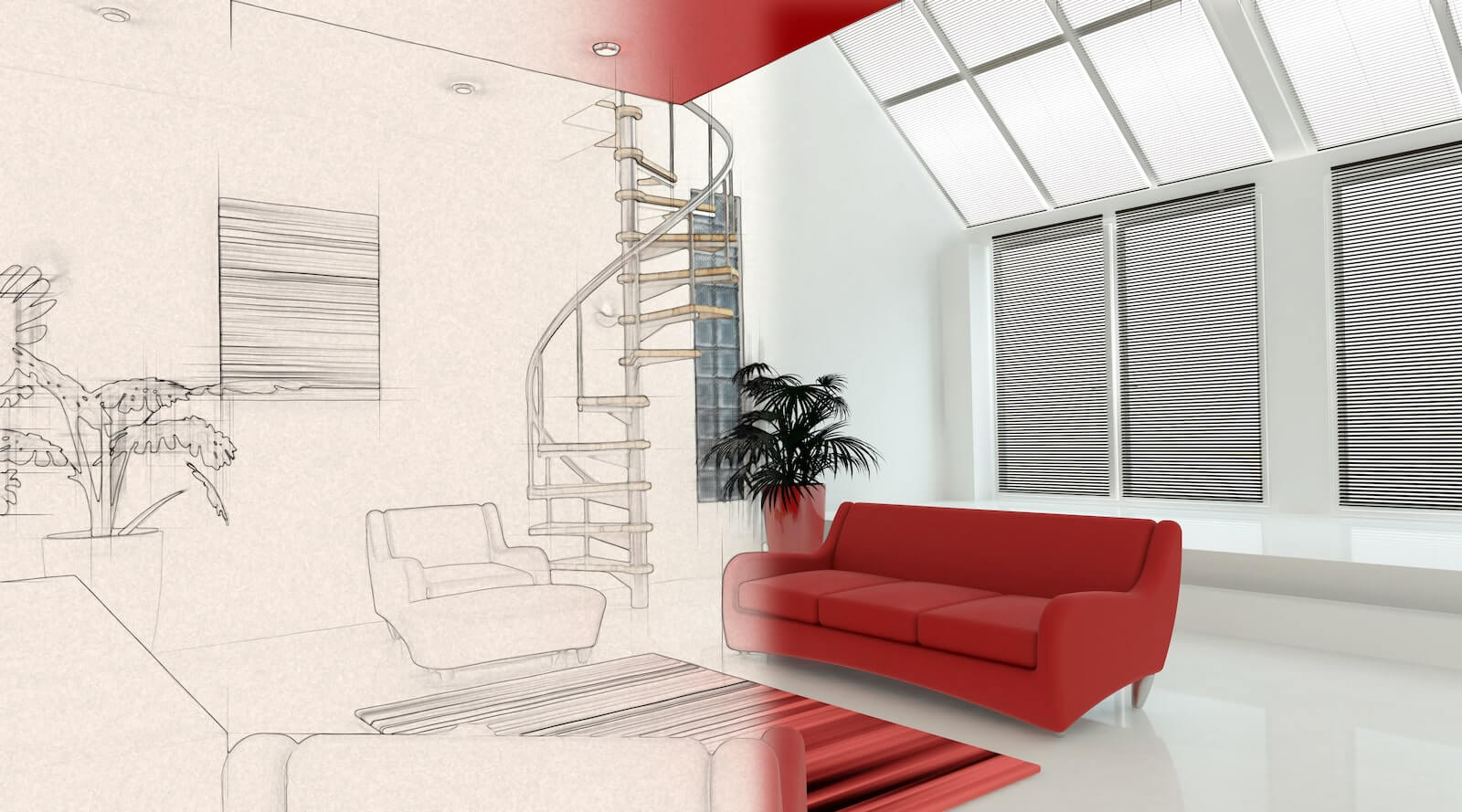
Even if you are not an architect, the world you are entering is one of numbers, measurements, plans, elaborations, and overview. You’ll have to try to think like a designer even if you don’t really know how to do it.
That’s why this design guide for a home theater room can really help you!
Why then don’t you consider using free 3D design software?
As in so many industries, Interior Design has transformed over the years. It used to be impossible to make a design using professional tools.
Of course, don’t think you can make a professional-level design or do work that takes years of study and effort-no software can replace the professionalism and experience of a specialist.
But it can help to make a graphic design on your home theater room to have a guideline when the work is going to be done.
Here is a list of the most popular software:
- SketchUp (Windows/Mac/Linux)
- Autodesk HomeStyler (Windows/Mac)
- Envisioner Express (Windows/Mac/Linux)
- Sweet Home 3D (Windows/Mac)
However, it is important to know that these software programs were not created specifically for home cinema, but for working on interior design more generally-if you plan to take advantage of them for your project, you will need to adapt.
The space
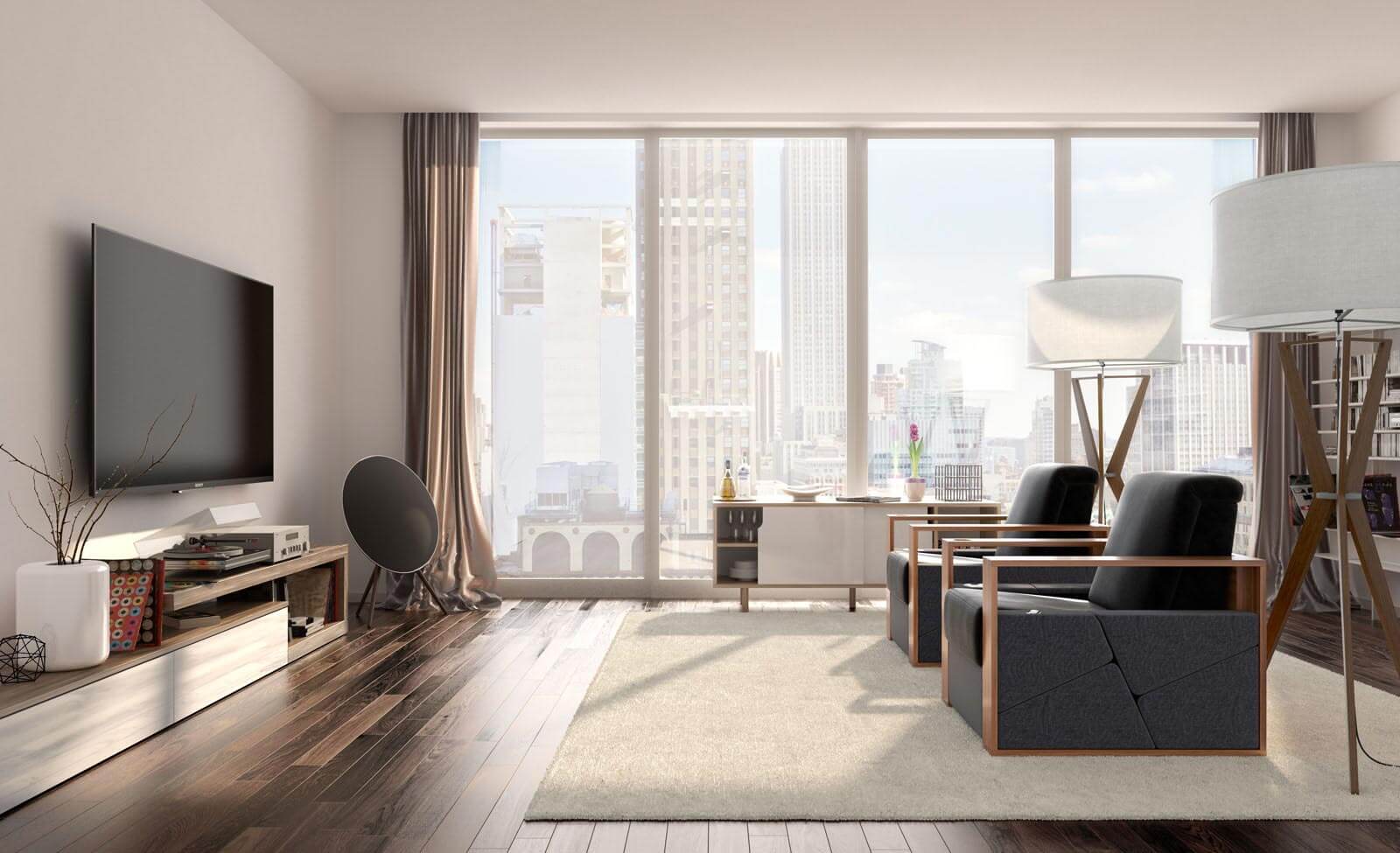
The fundamental thing, and the thing that unites our work with that of architects or interior designers, is the choice and structure of the space where we want to make the home theater.
Whether you want a Home Cinema room or a Media Living Room, the choice of the environment is crucial to have a result that meets your expectations.
Probably, in choosing where to make your home cinema, you will have found yourself considering a room in your home that lacks a specific function. Generally these are not too large spaces that you can use for other rooms besides the bedroom, kitchen and bathroom. These are spaces where you might think of building a small gym, a guest room, or … a movie theater all to yourself.
Of course, the choice of space will have to take into account many factors, but there are two that are crucial:
- lighting
- location in relation to the house
You need to consider whether that room has windows or whether you will have to recreate the lighting system.
In addition, you will have to consider the adjacency to other rooms, especially if they are rooms belonging to another home. This is to figure out the type of soundproofing intervention to apply to that particular situation.
Once you have chosen the space, it is extremely important that you are able to take care of the structure of the space in great detail. In this way you will comply with certain rules regarding the physics of sound and lighting and not find yourself with serious issues to deal with in the later stages of planning.
In planning the space you have to take measurements of everything. In particular you have to plan the placement of the following elements:
- armchairs
- lighting
- projector or TV
- furniture
- screen
- sound system
What we recommend you do is to create a blueprint as if you were an architect. Obviously, you won’t be able to improvise yourself a professional, but in your own way, you could draw in black and white what your home theater room will look like by jotting down measurements of the following elements on the blueprint.
Wall and floor coverings
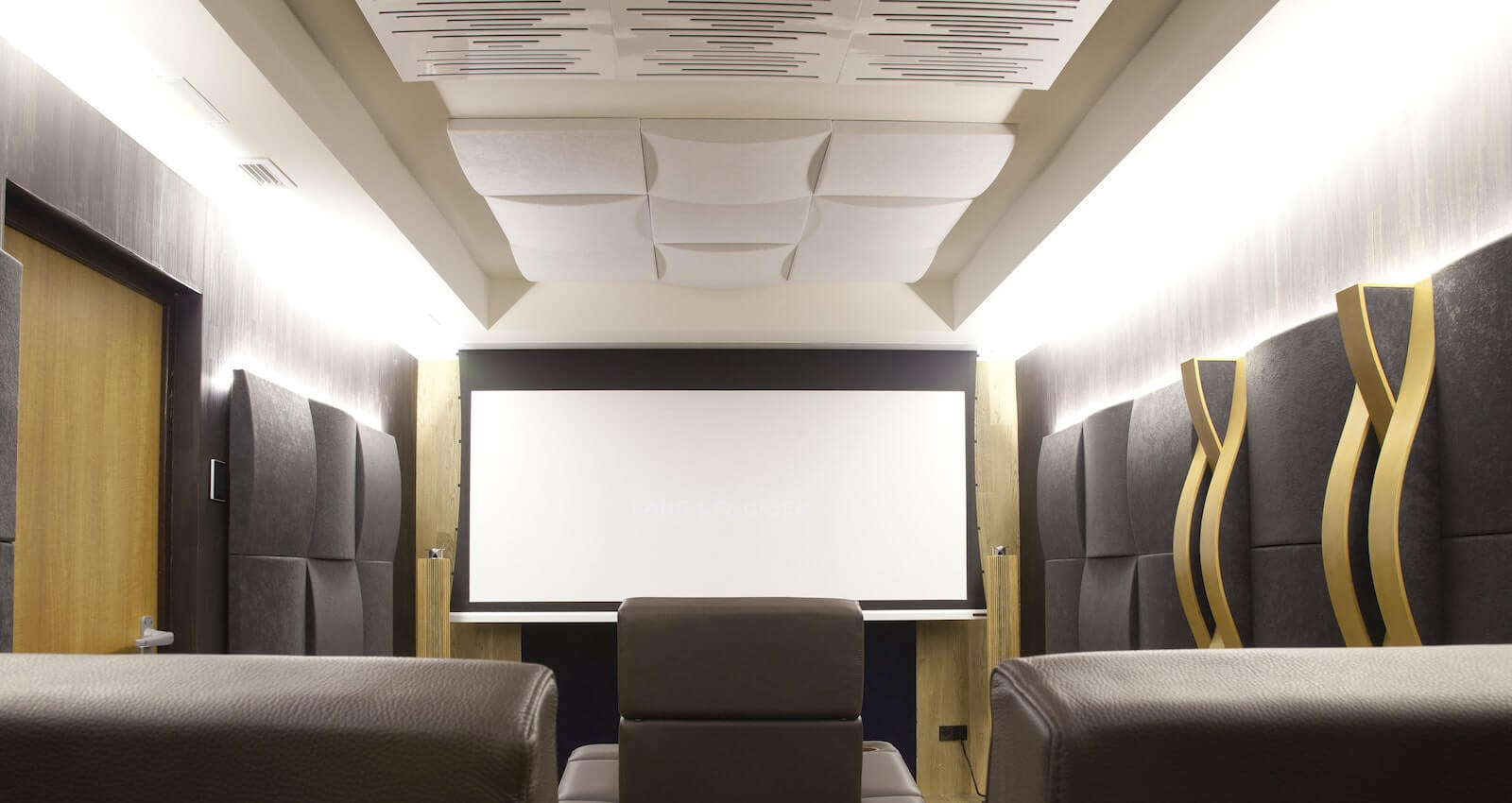
Once you have designed the project, you can think about the room’s furnishings. Of course, you will have to consider all the work necessary to soundproof the room: these are professional interventions, which are extremely important to ensure that the audio coming from the room does not disturb adjacent rooms, but also to make the audio performance inside the room optimal.
In addition to this design guide for a home theater room, we have already written an article dedicated to soundproofing. If you want to read it click here.
Soundproofing panels
A good solution for lining the walls and at the same time doing some work on the soundproofing of the room is sound-absorbing panels. The purpose of these panels is to prevent sound from spreading too far and to reduce reverberation as much as possible.
Generally, the material they are in fact made of is medium to high density polyester fiber and they have no internal frame because the very structure of the panel is formed by the acoustic insulation.
That is, they absorb sound due to their refractive property. They therefore manage to counteract the typical reflection effect of acoustic waves on the materials they run into by absorbing a large amount of them.
It is a very light and easy to handle material to furnish even the ceiling. An excellent solution that combines design and technology.
Carpet
As for the floor, on the other hand, a good solution is carpet, because it has a minimal ability to absorb sound and at the same time is aesthetically warm and welcoming.
Of course, it is a material that can hold a lot of dust so it requires more frequent maintenance than regular flooring. But it is also true that in a home cinema room you hardly experience that environment very long as in the rest of the house.
The sittings
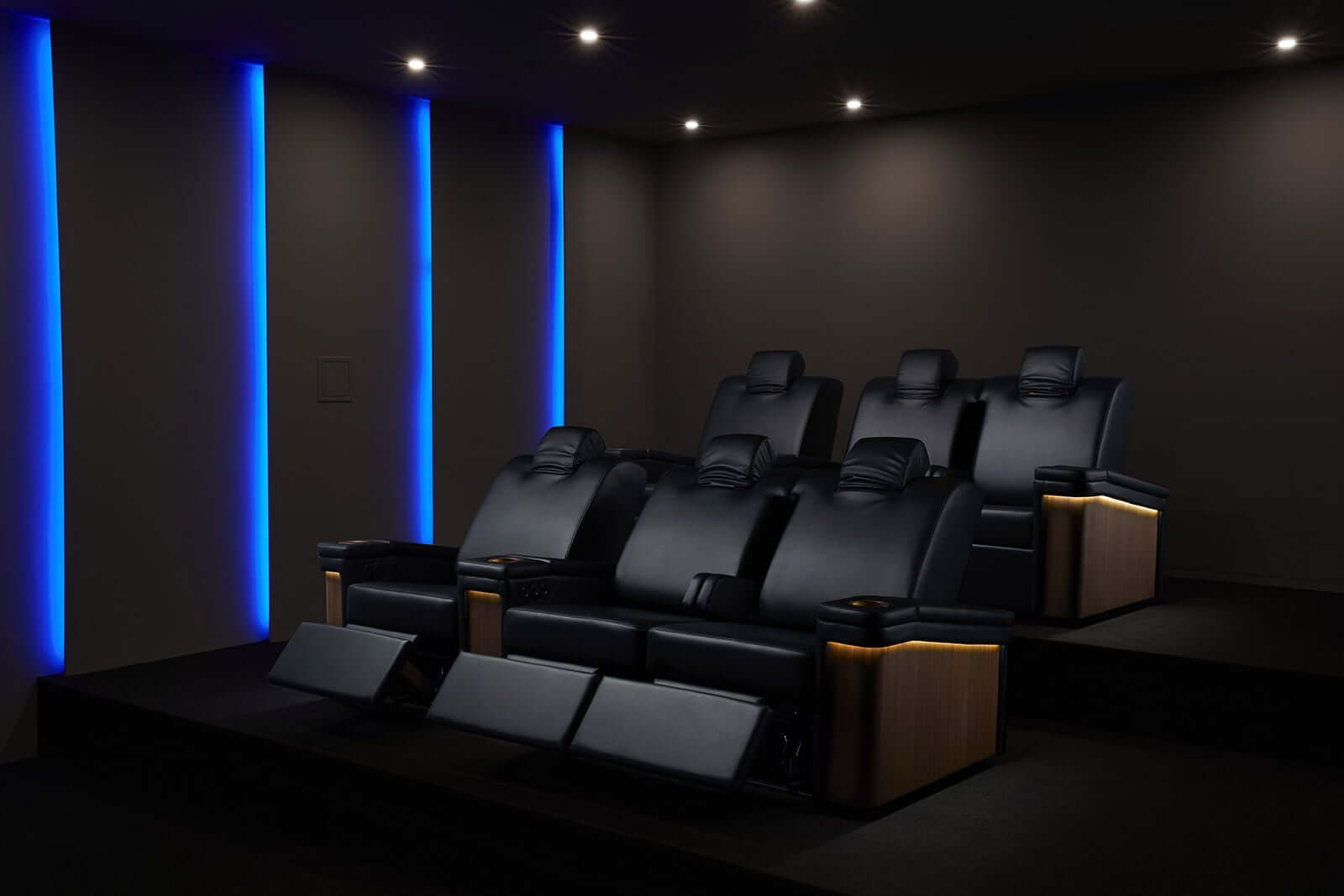
We have now come to the discussion devoted to seating. In this case you can indulge in deciding whether to put armchairs and sofas side by side, in creating only rows of seats as in a real movie theater, or to insert within the room a bar corner, tables, perhaps leaving a corridor to facilitate movement.
There are those who decide to customize their home theater room with a pool table: there is no limit to the imagination, as long as all the elements that will be part of the project you create are in harmony with each other both aesthetically and functionally.
The chairs can also be reclining and massaging. All you have to do is figure out the budget you want to spend and consider buying the most suitable seats, both in terms of quality and quantity.
Remember, in this design phase it is important to have a mindset focused on foreseeing the situations that might come up during the processing stages.
This is what the design phase is all about: having a very precise guideline to follow during processing and having made upstream decisions that avoid problematic or in the worst case, insuperable situations.
In this particular case, the choice of seating should help you understand how you would really like to divide up the room and how you can make the best use of the space you have.
In fact, you may find that you cannot afford any bar area and can only have a small row of chairs to best emphasize audio and big-screen viewing. Or conversely, you may realize that the size of the room will allow you to create an environment that is better suited to a Media Living Room than a Home Theater room.
Lighting

Of course, lighting also needs much thoughtful reasoning on your part. You need to take into consideration whether or not there are windows, as this would require the application of ad hoc curtains to make the room suitable for viewing on a screen.
It is important, in fact, to create a room lighting system that will best accommodate you and your guests.
You can add, for example, the option of gradually turning off the lights to gently accustom the eye to the transition from light to dark: just like in movie theaters.
In any case, whatever decision you make based on your budget, you should also take into account the lighting factor during the design phase not only to get an overview of your home theater room, but also to understand the order of work to be done.
I’m sure you would never want to implement a lighting system after you have applied soundproofing panels or carpeting to the furniture!
That’s why this guide to designing a home theater room can be useful to you!
In addition, everything related to the concept of room lighting involves the use of a portion of space for curtains, switches, and lights on the ceiling-all of which must be present in the design in order to have everything clear and defined by the time you or whoever for you will actually implement your Home Theater room.
Projector or TV
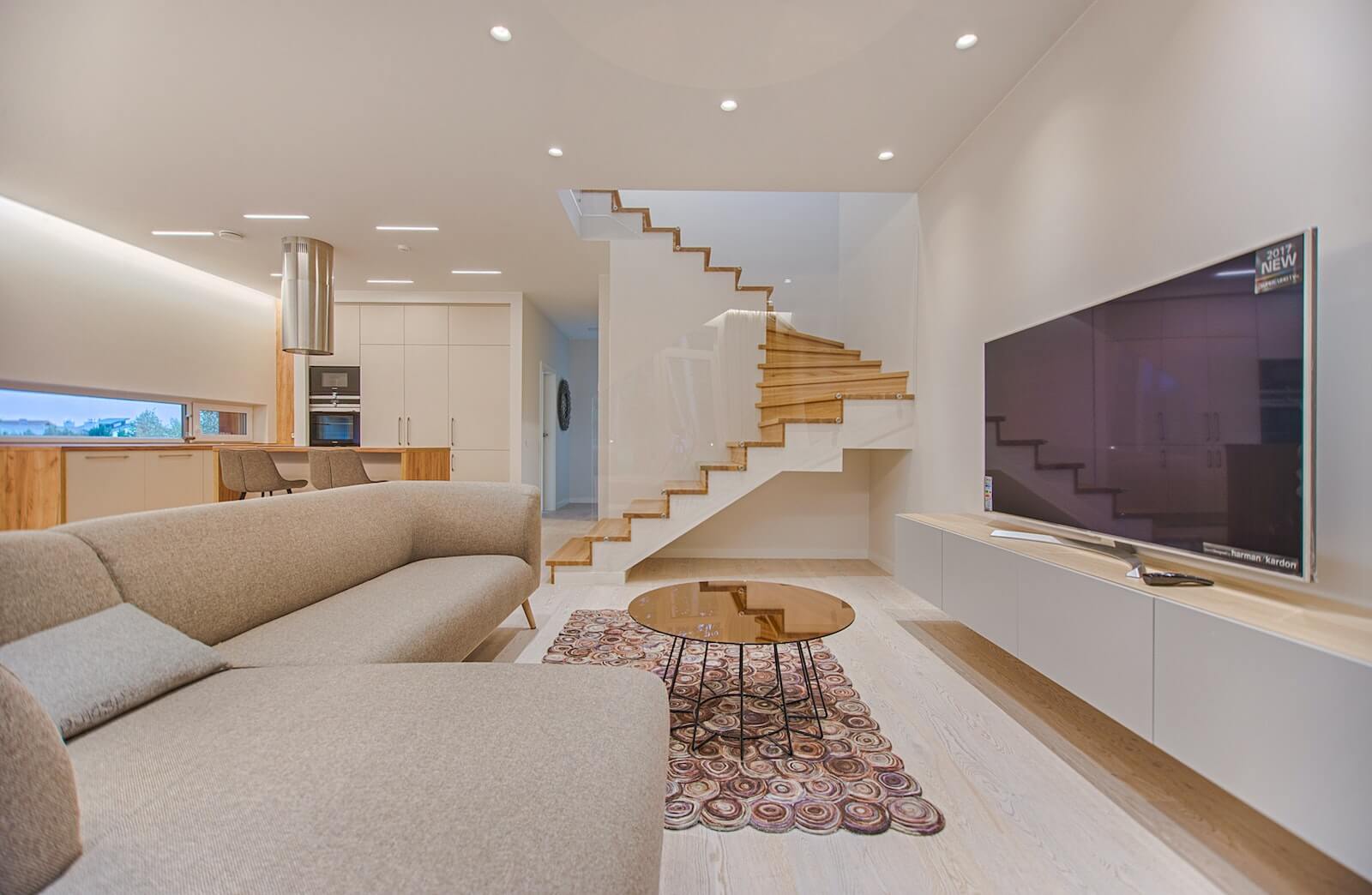
This is the age-old question for those about to build a home theater room: the choice between TV and Projector.
We could dare and call this choice, an almost conceptual decision.
That’s right, because if you choose TV you will definitely have high image definition and convenience in choosing and enjoying content.
Think 4k resolution or the convenience of a smart TV synchronized with all your favorite streaming platforms.
If you choose the Projector instead, you will be as close as possible to the physical mechanism that gave birth to the cinematograph in 1895: the projection of a beam of light onto a screen to display moving images.
The TV creates the image through tiny liquid crystal cells corresponding to the pixels of the displayed image. The process is completely different and this factor is perceived by the human eye.
The difference between the two devices is very similar to that between analog and digital (in music we can compare it to that between vinyl and compact disc).
It is up to you to make the choice, to figure out which school you are from: on the one hand you have a maximum output as far as video resolution is concerned, but you lose the warmth typical of screen projection.
Video resolution technology to date has managed to far exceed that of the human eye: put simply, the resolution of our eyesight is less than that of some contemporary TV models.
The projector, although you can today choose from so many varieties all of excellent quality (i.e., the video resolution of a projector is also excellent), in this case represents the “analog” way precisely because of the fact that its mechanism is based on a projection of light.
This is how the real movie theater has always functioned.
For many years, projection consisted of passing the beam of light through the film of the film running at the rate of 24 frames per second. Each frame was thus projected onto the screen and that particular speed created the moving images, since at that speed the human eye can perceive no “breaks” between frames.
With the advent of digital, “pizzas” have been replaced by the digital DCP format, but video is still the result of projection.
The different technologies
As far as TV is concerned, you can rely on four technologies on the market today:
- LCD
- LED
- OLED
- Quantum Dot
LCD and LED are very similar technologies. LED is practically an evolution of LCD and surpasses it in what concerns the distribution of brightness on the screen while having, compared to the other technologies, less image accuracy in highly animated scenes.
QLED or Quantum Dot is itself an evolution of LED technology and offers a much wider range of colors giving the image more brightness and more realism.
OLED is the latest addition: low power consumption, excellent contrast, brightness and detail, but the cost is high.
As for projectors, on the other hand, we can distinguish 3 types:
- DLP
- LCD
- LCoS
DLP (Digital Light Processing) technology is perfect for home use and for those with low expectations. It is inexpensive and despite very good image definition can sometimes exhibit that typical color flicker known as the “rainbow effect.”
LCD (Liquid Crystal Display) technology has higher brightness than DLP and high quality color-they are the right middle ground between the top choice and the cheaper one.
LcOS projectors are famous for giving a more immersive viewing experience than the other two technologies mentioned above. What’s more, it completely eliminates the cinemascope format (the one with the sidebars) making viewing much more enjoyable. These projectors perform best in rooms with perfectly dark rooms and medium to small screens because they do not offer the same brightness levels as LCDs or DLPs.
Projection screen
If you opt to use a projector, it is equally important to choose where our magical light beam will bring the moving images to life.
There are so many types of panels and with different characteristics, so the first thing to understand is the size, the format you want to have and that depends directly on the projection format of the projector.
You can choose from 1:1, 4:3, 16:10 or the more popular 16:9.
Then we have the fixed screens, which are inexpensive but offer a permanent solution fixed to the wall.
Motorized screens, which are panels that can drop from the ceiling or rise from below through an electrical control and thus can remain.
Tensioned screens, i.e., screens maintained in tension by a cable to prevent sagging or rippling phenomena.
There are framed screens, which are fixed screens mounted within a frame, usually made of aluminum, that allows for perfect planarity of the curtain.
Or recessed screens, which have motorized screens mounted concealed in the ceiling.
Finally, tripod screens, which are characterized by a three-legged support and are useful if they are to be moved frequently.
All of these screens are generally made of plasticized PVC, but sometimes it is possible to choose those made of fabric (as in the cinema) or fiberglass.
The Risk of Do-It-Yourself
Despite the directions in this guide, aimed at those who want to embark on this adventure on their own and would like to realize their big dream of having a home theater room, we strongly advise against the DIY route mainly for two reasons:
- Waste of time: trying to accomplish something, perhaps by studying articles like this on the web and getting informed, will never lead to the result that professionals in the field can guarantee, and this will eventually result in a lot of wasted time. Because in the long run, issues can occur that will make the room complicated to live with
- Waste of money: it may seem like a miscalculation, yet the initial investment worth having a professional do the work is less than the money that would be lost over the years if you try the DIY route. We’re talking about maintenance costs, the replacement of all those unprofessional materials used, and work to “patch” where there will inevitably be leaks over time..
Conclusion
This guide to designing a home theater room has come to an end.
The decision is now up to you.
In any case, realizing the dream of having a Home Theater room at home is a beautiful adventure and worth all the effort you have to spend to go through it.

